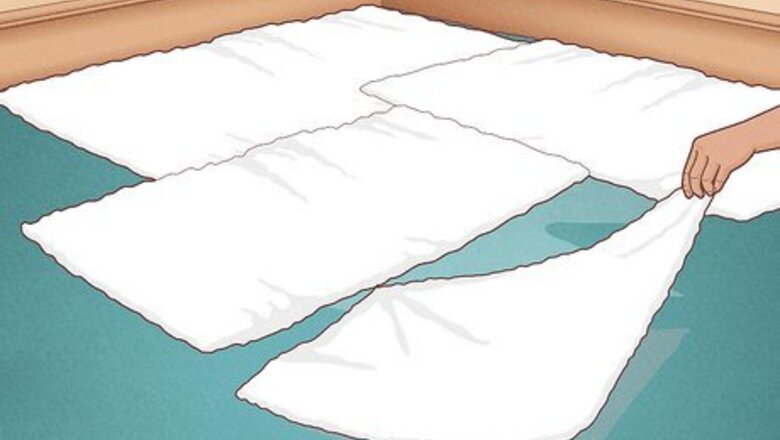
views
- Use a wet-vac to suck up as much excess water as possible.
- Place fans and dehumidifiers around the room to create air flow.
- If there is water underneath the carpet, peel the carpet up and point a fan beneath it.
Drying Carpet Quickly

Spread towels over the area. Walk back and forth over the toweled area until the towels are completely saturated. Take those towels away and replace them with dry towels in the same area. This is a good technique for small spills or when your carpet is just slightly damp. If you’re dealing with a flood or a burst pipe, move onto the next step. Check underneath the carpet to make sure the carpet padding and the floor aren't sopping wet. If the carpet is only slightly damp, sprinkle baking soda over the area, then let it sit for 24 hours to let it soak up any moisture. Then, vacuum the baking soda up.
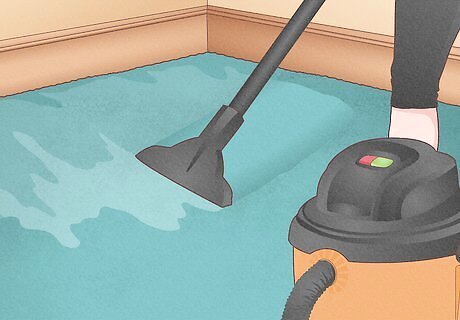
Vacuum the wet carpet with a wet-dry vac. Rent a wet-dry vacuum from your local hardware store or use one that you already have. Vacuum the carpet with the wet vacuum until no more water comes out. Make sure you use a wet-dry vacuum, not a regular home vacuum. The wet vacuum cleaner removes water from the carpet itself, but it may not be able to remove it from the padding if the water has wicked through the carpet backing or soaked in under the edges. Keep an eye on the fill tank and make sure you dump it before hitting overflow. Depending on the amount of water in the carpet, you may have to dump the tank several times.
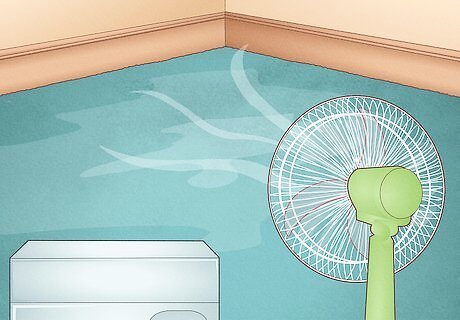
Use fans and dehumidifiers to evaporate the moisture. Bring any fans you have into the room and turn them on. Open the windows and use a dehumidifier to dry out the area as quickly as possible. Again, check underneath the carpet to make sure that the floor and carpet padding are not still sopping wet. Try to create a "vortex" around the wet area. For example, you might take 3 fans and arrange them in a triangle around the wet area, all blowing outside of center instead of directly across the wet area. You could also rent air movers and professional dehumidifiers from a big box store. If the weather is warm, open neighboring windows to allow the humidity to escape.

Clean the carpets to get rid of bad smells. After your carpets are completely dry, you may still notice a slightly musty odor. Use a carpet cleaner to steam clean your carpets and remove any smells that might have stuck around. Carpet cleaners are great for removing stains and odors, but they can’t tackle mold or mildew that’s beneath the carpet. If your carpet is wet underneath, use the method below to dry it out.
Drying Wall-to-Wall Carpet

Move furniture off the wet carpet. Do this so that you can lift up the carpet and check the pad and the floor underneath. It's important to remove the furniture as quickly as possible so that you can get started on the carpet. Leaving the furniture on the wet carpeting can damage both the furniture and the flooring.
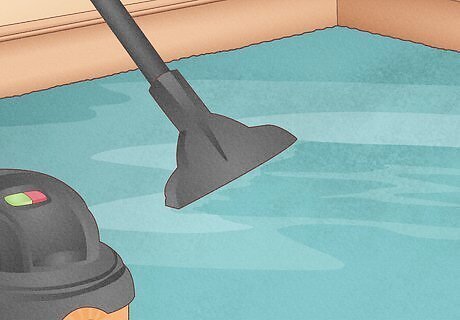
Remove as much of the water as possible with a wet-vac. Rent a wet-vac (or use one that you already own) to vacuum up as much of the water as possible. Go over the carpet several times until the vacuum no longer sucks up water. Or, use a hot water extraction unit, which is similar to a wet-vac but can hold more water. Check with a local carpet cleaning company to see if you can rent theirs.

Check the amount of water beneath the carpet. Getting rid of the water on top of the carpet is only the beginning. Walk across the carpet, and listen carefully. If you hear a sopping or squishing sound, then there’s likely water beneath the carpet itself. Leaving water underneath the carpet could cause the floor to buckle or mold to develop.
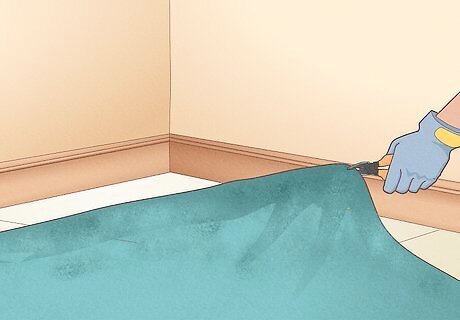
Raise carpet off the floor. Start in a corner. Using pliers and a pair of work gloves, start separating the carpet from the padding and the floor. Avoid cutting the carpet, because it will be incredibly difficult to put back together attractively. You can also lift the carpet up pulling it off of the installation strips at one of the corners. Do this on a carpet's side or edge if you have a short side that is easy to access and work with. Fold the corner or side of the rug over so you can see the carpet pad. If you are pulling up carpet after a flood or sewer overflow, wear gloves and a respirator mask. There may be germs inside of the carpet that could be detrimental to your health.
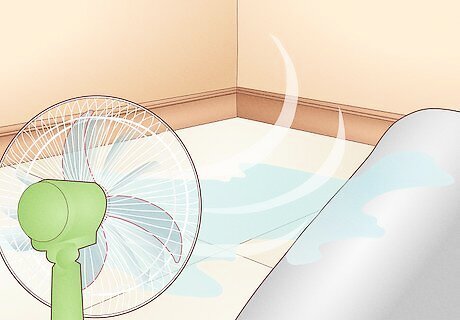
Blow air between carpet and padding with a fan. Try to dry the pad without removing the carpet, especially if the pad seems to have only gotten a little damp and the subfloor seems dry. Keep the corner or side of the carpet that you have lifted raised and use an industrial fan to blow air under the carpet onto the pad. Turn up the heat and open the windows to aid in the drying. Use a dehumidifier to dry the carpet out even faster. Attach a vacuum hose (for vacuuming up wet things) to the exhaust of a vacuum, then put the hose under the carpet, placing the carpet back over the hose. The hot air will cause the carpet to float over the pad and speed up the drying process.
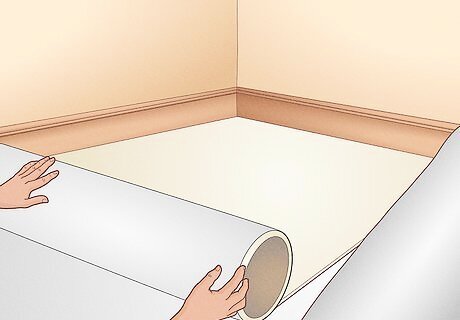
Replace the carpet padding if it doesn’t dry out. The pad beneath the carpet is most prone to mold and mildew. If you can’t get the padding dry after 24 hours or it starts to develop mold, unfortunately, you need to replace it. You can either install the padding yourself or hire a professional to do it.
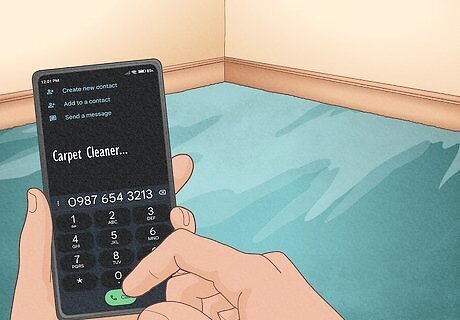
Call in the professionals. In the end, one of the best ways to deal with a wall-to-wall wet carpet is to call in someone who knows how to deal with it. It's important to do this as soon as possible so the company can salvage as much of the carpet, floor, and padding as possible. Make sure the service is guaranteed and look for a company that promises to dry the carpet, the pad, and the floor if necessary. Check with your homeowners or renters insurance. Depending on the cause of the wet carpet, it is possible your policy may cover the cost of the carpet cleaning.
Drying a Carpet in the Car

Clean the carpet within 24 hours. Mold can grow in as little as 1 day and cause lots of problems, so dry the carpet in your car as quickly as possible. This will not only make sure that you avoid the mold, but it means that water won't get into electrical places that it shouldn't.
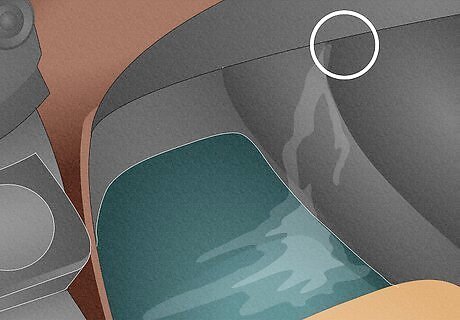
Determine where the leak is coming from. Only dealing with the carpets in your car without locating and stopping the leak isn't going to do you much good. You'll have to keep on drying your carpets constantly. Look around your car and try to figure out where the leak is coming from, then patch it up or take it to a mechanic. Many cars develop leaks because the seals around the doors or windows aren’t tight anymore.

Remove as much water as possible with a wet-vac. Use a vacuum that can remove water, or a dehumidifier (or both). Use them to remove as much of the water as you can, especially from carpeting that can't be easily removed. Leave the dehumidifier in the car until the water seems to be gone. Sop up water with rags on the non-carpeted areas of the car.

Check the padding under the carpeting. Water has a tendency to pool in the padding under the carpet. Not dealing with this can create mildew and mold problems. Start by peeling up the carpet from a corner using pliers and work gloves. Avoid cutting the carpet as this will be incredibly difficult to fix later on.
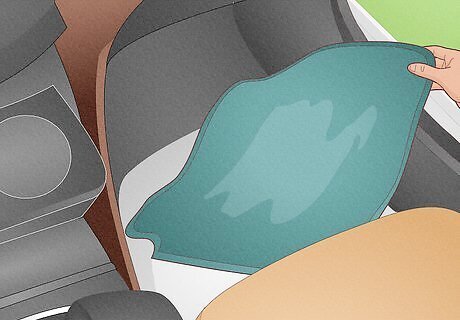
Remove all the carpeting from the car. It's really important that you remove the carpeting from the car, especially if the problem is an ongoing one. Use a wrench to remove all the seats and seat belts, then peel up the carpeting. Put it somewhere that it can dry, like over a sawhorse or a drying rack outside.
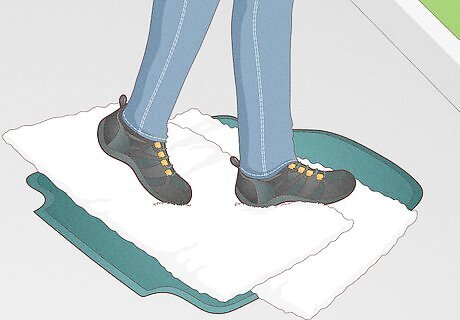
Dry the carpeting separately. Once you've removed the carpeting from the car, work on drying it completely. Place towels over the carpeting and walk over them to get the water to soak up into the towels. Replace with fresh, dry towels as they get wet. Use a hairdryer or a fan and position it over the wet towels. Keep doing this until they are completely dry. Once the carpet is dry, reinstall it by placing it back in the car and spreading it out until it’s smooth. Then, reattach the seats and seatbelts with the hardware you removed earlier.

Replace the carpets if you can’t get the water out. Sometimes the absolute best thing you can do is replace the carpet, especially if you or anyone in your family is sensitive to mold. It doesn't take long for mold to grow and once it's there, it is very hard to get rid of. Discuss this with a professional before you do a complete overhaul of your car's carpeting.




















Comments
0 comment